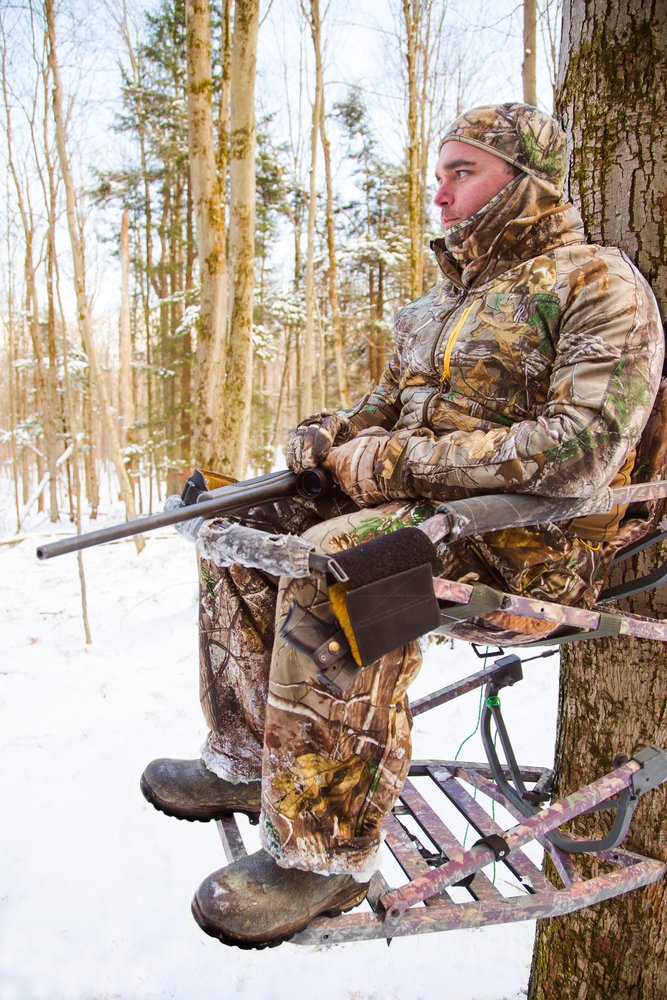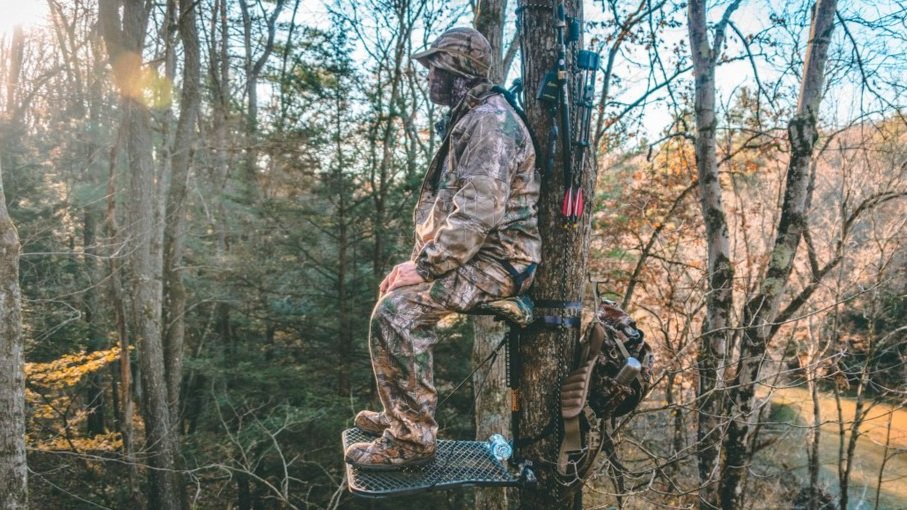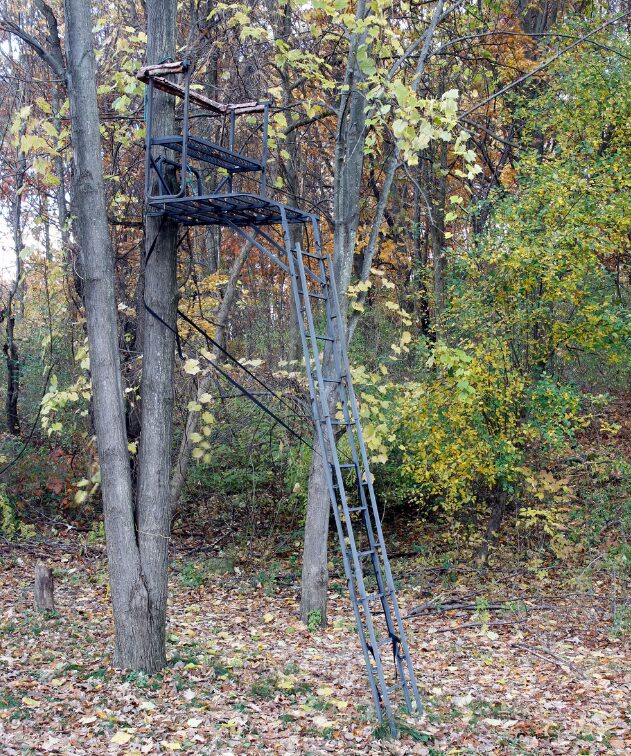In This Article

In This Article
The 3 Types of Tree Stands to Up Your Deer Hunting Game (Literally)
If you primarily hunt deer east of the Mississippi River (or within about 500 miles west of it) it’s likely that you have hunted out of a tree stand. Maybe you’re in one right now reading this on your phone, if so, shoot straight my friend. Unlike many midwestern whitetail hunters, western hunters are less likely to use a tree stand as it makes more sense for them to spot and stalk the vast amounts of land that part of the country offers for western big game animals.
No matter where you hunt, it’s good to have a base knowledge of the three primary stand options. If you’re new to hunting, this will be a great introduction and if you’re a seasoned veteran, maybe this will make you think twice about going with the climber and switching to a ladder stand.
What is a Tree Stand?
A tree stand is essentially a metal platform that allows a hunter to get anywhere from 8’ to 30’ off the ground and above the action-packed forest floor. There are many benefits to using a tree stand. You’re out of sight of most game passing by, for the most part, you’re out of their line of sent, and as anyone who has hunted out of one will tell you, you can just about see everything much better from up there (until you can’t…).
With these being the primary benefits, tree stands are especially loved by bowhunters. By placing your tree stand in a tall, mid-sized, straight tree with rigid bark that overlooks a game trail with a history of activity or food plot, you can get a lot closer to game without being detected as opposed to if you were stomping through the woods on foot.
What are the Three Different Types of Tree Stands?
Dating back to 1947, the tree stand has been around for much of the modern hunting world. The Japanese are credited with inspiring the first tree stand used for hunting. During WWII their snipers would build platforms to sit up in the treetops of the jungle. The modern-day tree stand sure has come a long way since then, with lightweight metals, new designs, and a competitive market, we are in the golden age of tree stands. So how do you decide which type to use?
The three primary types of tree stands are the climber tree stand, hang-on tree stand, and ladder tree stand. Let’s break down what these are and how they are different.
Climber Stands

The climber tree stand is a two-piece stand comprised of the top and bottom pieces of the stand. Many hunters love the climber because you don’t need climbing sticks or a ladder of any kind. By attaching the top and bottom sections to the tree, you can then secure yourself to the tree using a harness and stand your feet on the bottom part of the stand with your arms on the top part and begin climbing the tree with the stand.
The action of climbing the tree can be noisier than some hunters like so if you’re getting in the woods last minute, you’ll want to try and be extra quiet when setting up your climber stand. Great for public land and solo hunters, the climber stand is fairly easy to pack in and out of the woods and set up on each hunt.
You can expect to pay anywhere from $200 to $600 for a climber stand and remember that safety is the most important thing when hunting out of a tree stand. Some of the most popular climber tree stand brands include Summit and Lone Wolf.
Hang-On Tree Stands

Hang-on tree stands are another great option for the public land hunter. Probably the most versatile and affordable option, hang-on tree stands are a popular choice among hunters. The way they work is by using climbing sticks that you attach to the tree as you climb up.
Climbing sticks are typically around 30” long and are used to form a ladder of sorts to climb in and out of your stand. Once you reach the height you’re happy with, you attach your platform using chains or ratchet straps depending on the brand of the stand.
Hang-on stands tend to be a little more affordable with a price range of $100 to $400 and as mentioned before, are often the perfected tree stand for public land hunting. Some of the most popular hand-on stand brands include Millennium, Hawk, and Summit.
Ladder Stands

Ladder stands popularity has grown in recent years. With the aging population of hunters, many are choosing ladder stands for their comfortability and extra space when sitting up in a tree. Ladder stands are exactly what they sound like, they have a ladder attached to the stand that the hunter can climb up and down to get in and out of the stand. These stands are often much heavier and take multiple people to set up.
With that being said, the space and security you get out of a ladder stand cannot be matched by a climber or hang-on stand. Ladder stands are better used on private land where you don’t have to constantly take down and put up your stand. Ladder stands have a price range of around $150 to $500 and come in many different configurations. Some of the most popular ladder stand brands include Millennium, Muddy, and, Rivers Edge.
Choosing the Right Stand for You
Choosing the right stand for you entirely depends on your hunting situation. If you’re solo hunting public land, you’ll likely want to opt for a hang-on or climber stand. If you’re a 65-year-old landowner who walks 25 yards from your front door to hunt, the ladder is probably more your speed. No matter what your hunting situation, safety is always the most important factor. Safety tethers and harnesses are a must when hunting out of a tree stand no matter what kind of stand you choose. Other things to consider when choosing a tree stand are price, comfort, size, weight capacity, and much more.



